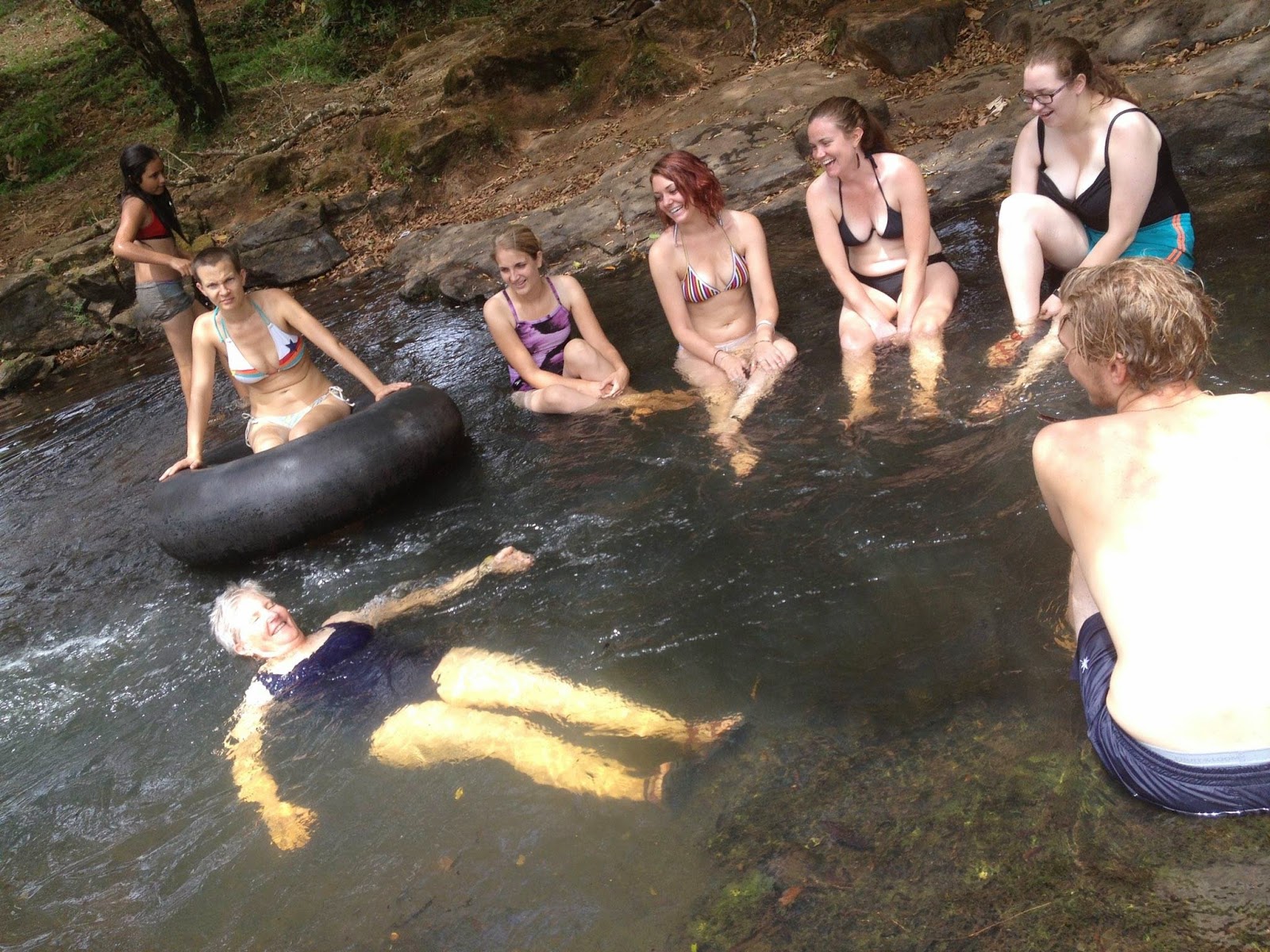During my training I am living with Adriana, a single woman
in her mid 50’s who is raising her two grandchildren, Oracio (15) and Adriana
(10). They remind me of my own
grandchildren of the same age: Sammy who is loves sports and has his first
girlfriend (just like Oracio) and Tess who knows that she will be a big girl
soon but still enjoys playing in the carefree way that 10 year olds love to do
(just like Adriana).
Adriana is a hard working woman. She sells clothes out of the house (both new
and used), has an import business for radios and radio parts, sells ice (she
freezes it in plastic bags and folks stop by to buy it) and once a week she
makes about 50 nacatamales, which she sells for a little over a dollar
each. There is a lot of family in the
neighborhood: on our side of the street next to us is Adriana’s brother Vicente
and his wife Tina with their adult son Dennis.
Vicente is very overweight and doesn’t do much all day, which really
irritates Adriana (“He just sits around and gets fat” she says with
disgust). Tina and Vicente make
Nicaraguan tacos (nothing related to Mexican tacos) and chocolate covered
frozen bananas. They also sell ice and
because there is a school a block away, they do a pretty good business selling
the “chocobananos” to the students. Next to Tina and Vicente is the aunt:
Quecha (pronounced Kaycha). She is the
matron of the street. In her early 80’s,
she and her husband Edmund lived in the states for a few years during the war
but didn’t like it and are happy to be back here with family and
familiarity. Quecha is another hard
worker: runs a small shoe store out of her home and makes 200 nacatamales every
week to sell to any taker.
Across the street lives Magali, a single mom (lawyer) with
two sons: Pedro (12) and Pablo (8).
Magali is a cousin but I have lost track of how she is related. Her sons are the sweetest boys. One morning I saw them walking to school
together in their uniforms and Pedro had his arm around his little brother’s
shoulder – it warmed my heart. Next to
Magali is Elena from El Salvador with her handsome Argentinian husband and their
gorgeous 6-year-old daughter, Belen. Of
these 5 homes, the doors are always open and people and kids (and dogs) move
back and forth from house to house very freely – like a big family. The final house is a bit mysterious. Apparently a woman and her adult daughter
live there with their dog and 20 cats. I
have seen the daughter come and go a few times: she walks in a very erect
position and speaks to no one. I like to
think of this home as the Boo Radley house of our neighborhood.
Aside from all the things that get sold out of the homes
here, there are also venders walking up and down the street at all times of the
day selling bread, tortillas, newspapers, tamales, etc. The venders all have their way of advertising
their products and it is often a kind of sing-songy chant. Some musical anthropologist could have a
blast recording what venders shout out in the streets here.
At night people gather on the sidewalk in front of Quecha’s
house and sit in plastic chairs and shoot the breeze. Venders walk by with their wares on the heads,
kids play in the street while their parents and grandparents yell at them to be
careful (Cuidado!) when cars or mototaxis go by or yell at them to return to
base camp if they wander too far into the next block. Tonight little Adriana and Belen and another
cousin who does not live on our street played house with their dolls in front
of Magali’s house. After they cleaned
up, they started a chasing game and were eventually joined by Pedro and Pablo –
I find them so much fun to watch.
I sit and listen and get about 40% of the conversation. They talk fast and when it is really
important, they seem to drop their voices to a mere whisper. Magali’s mother often stops by and she is
full of funny stories. I know this
because she holds their attention when she talks and when she finishes they all
laugh. I look forward to the day when I
too will get the joke. The conversations
are usually about the weather (we are having record breaking heat these days so
it is a legitimate topic) and where to get the cheapest products – mostly
food. People are walking by all the
time: families, lovers, boys, girls, moms with kids, old folks with young folks
– it is an endless parade of entertainment for me. Occasionally there is a conversation in
hushed tones is about someone who just walked by or when “Mrs. Radley” goes in
or out, there is usually some comment about her. The main purpose for sitting
out there is to sell the nacatamales so that is also happening the whole time
we are together.
I have attached some pictures of a few of the venders as
well as the house that Adriana and her friends made today.
Adriana is the one on the right with the glasses.
The last door on the left is the entrance to my house.
In the background on the right you see the plastic chairs in front of Quecha's house. The woman in the blue/green blouse is Adriana. On the left you see the girls playing and Magali standing in her doorway.









